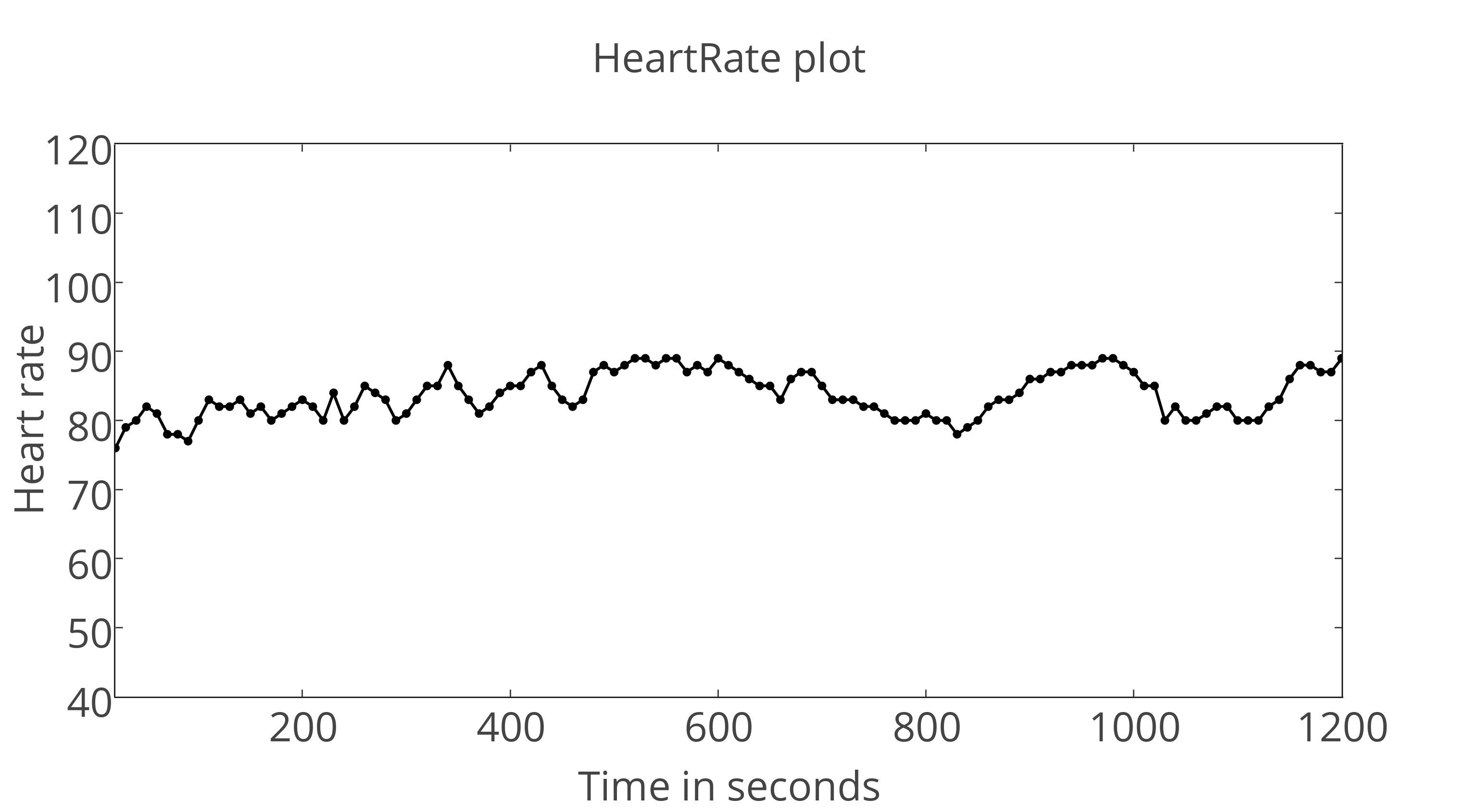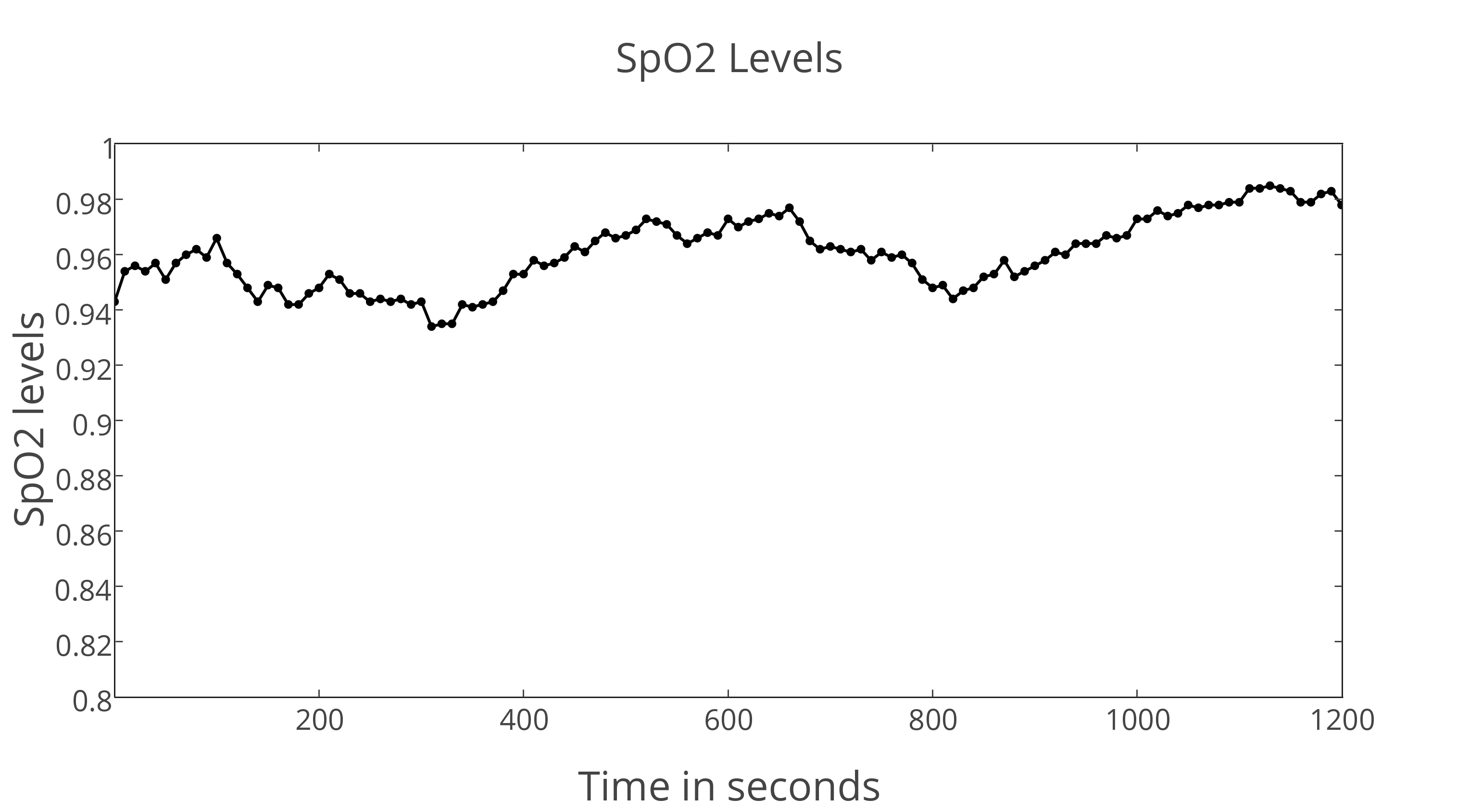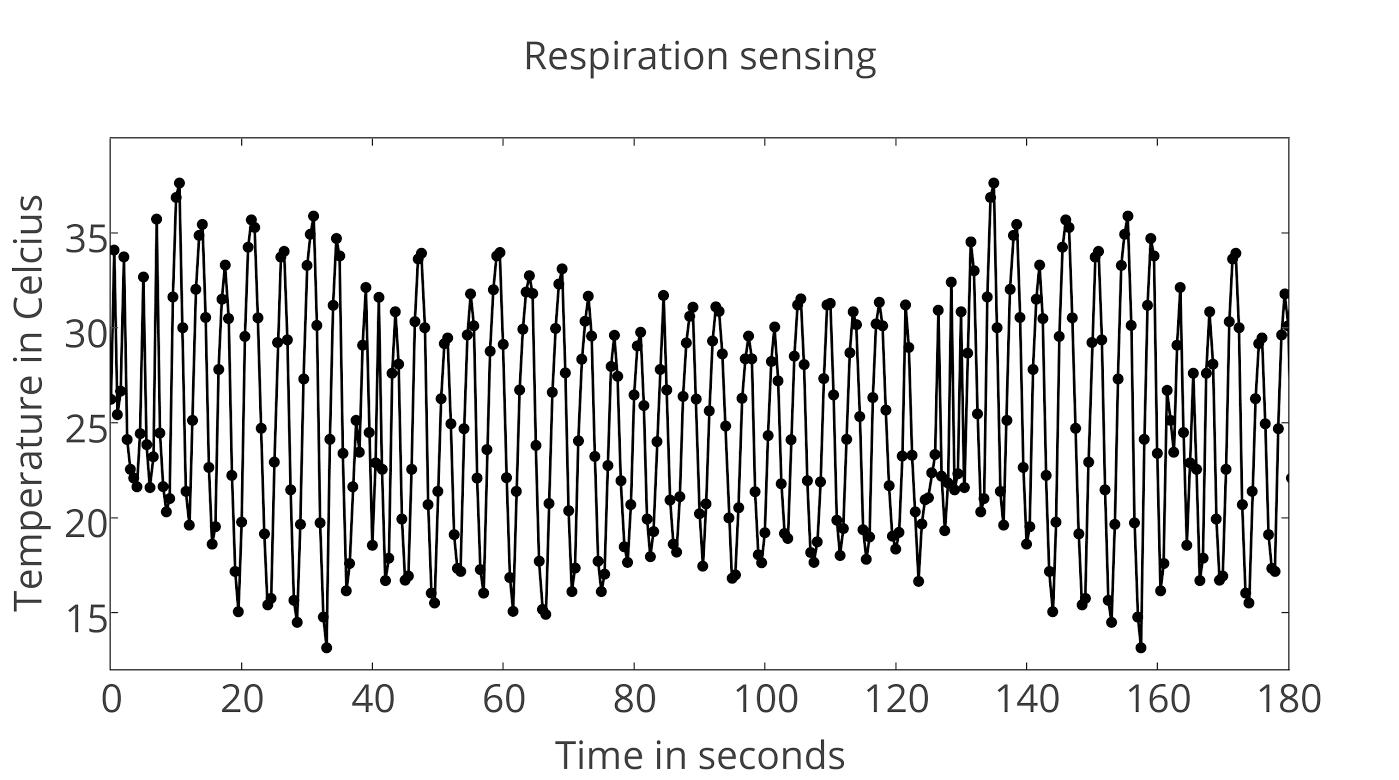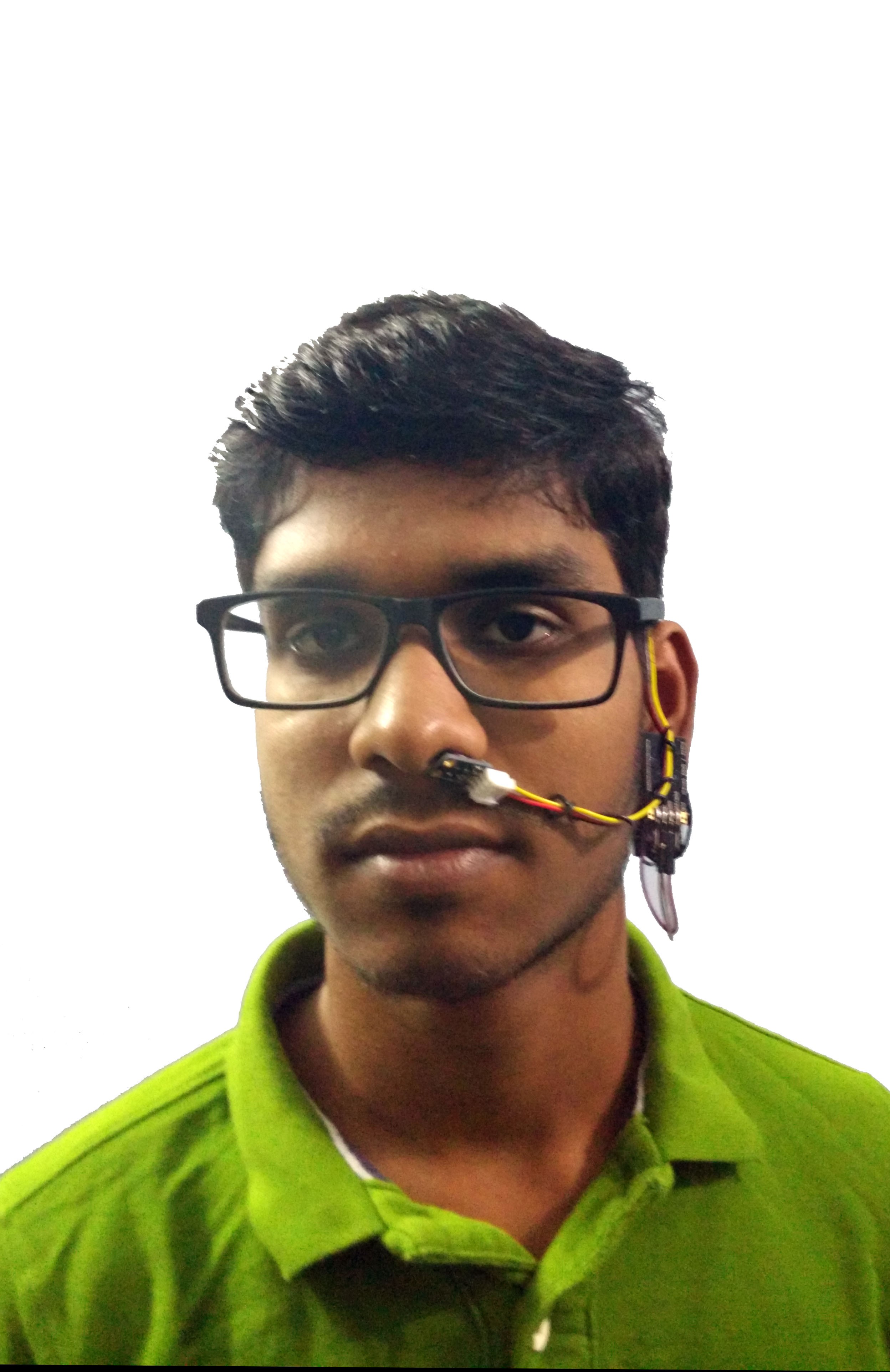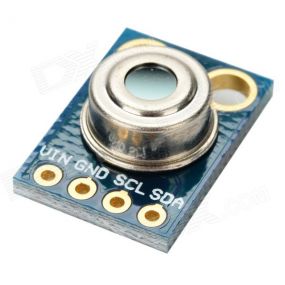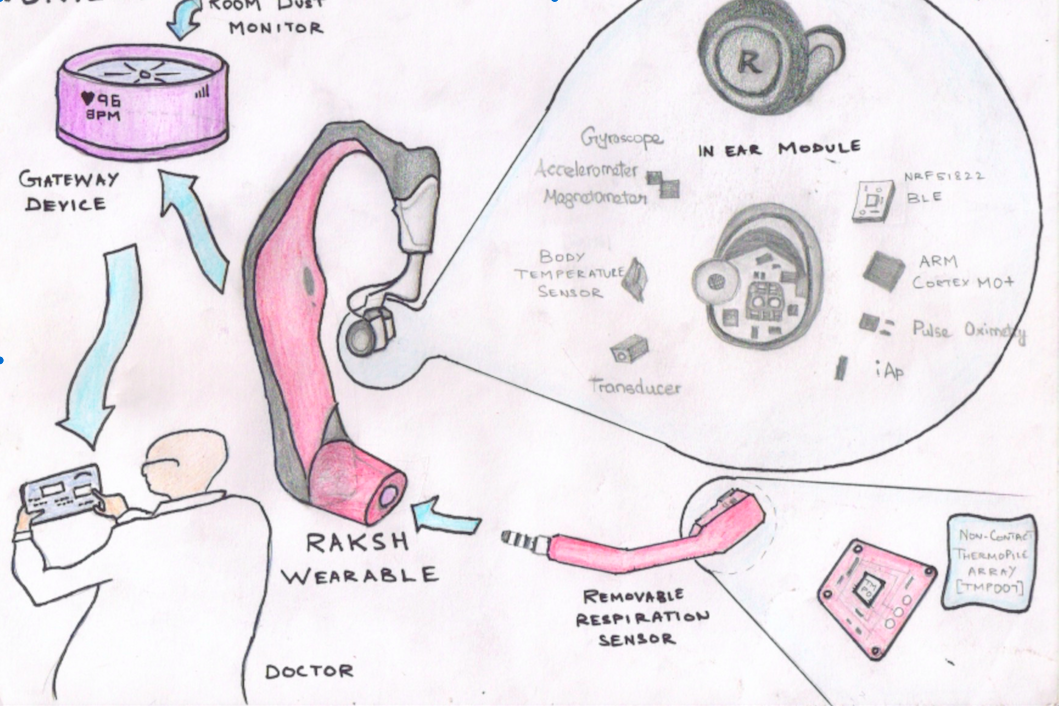-
Prototype Version V1.0
09/19/2016 at 01:26 • 0 commentsThe prototype V1.0 is finally complete, Size was a chief concern for us and we put a low of effort to making it small to fit behind the ear. Use of Particle's Photon demanded more power use than any other BLE board, However thanks to the use of sleep modes we were able to make do with a 500mAh lipo battery for one day's battery life. As Photon needed a 5V power supply, For this the Pololu 5V Buck-Boost converter was used for increased efficiency.
Not the best solder job I know, But hey it works :D.
As for the sensors, V1.0 uses an MLX90614 IR temperature sensor to measure the nasal temperature for respiration sensing. Though I was working on porting the Si1143 to the Particle Photon, Deus-Ex Machina came in the form an chinese ebay parcel.
The super cheap, teeny MAX30100 sensor had arrived (Glory be Flying Spaghetti Monster) after testing it with the kickass library written by oxullo in a Arduino Pro Mini, The sensor was providing excellent performance.Porting the library to the Particle Photon turned out to be a bit more difficult than I had assumed, A can of redbull helped me do the job. I've compiled the code natively using the Particle IDE(Based on Github Atom).
The next few posts will be about getting a small 3d printed enclosure done for this and a post to walk through the code.
I guess I also need to compare and validate the MAX30100 sensor against a clinical Pulse Oximetry sensor. -
Pulse Oximetry & Heart Rate
09/07/2016 at 15:11 • 0 commentsPhotoplethysmography (PPG) and Pulse Oximetry (SpO2) are carried out by a single sensor which is used to measure reflectance of three LEDs of different wavelengths. SpO2 is found by measuring the reflectance of 650 nm light in comparison with 940 nm light. Heart rate is measured by PPG wherein the change in blood volume is found by measuring reflectance of 850 nm light. The measurement of vital signs by placing sensors and LEDs behind the earlobe has been validated by previous work.
The Si1143 I2C light sensor was chosen for its small size and cost. The presence of an integrated amplifier and Analog to Digital Converter (ADC) has resulted in a lesser Bill of Materials (BOM). The Si1143 light sensor also has inbuilt LED drives which allow easy control over three LEDs. I'm currently toying with the MAX30100, Will post the results here shortly.
Here is the heart rate data for 3 mins.
Here is the SpO2 data for 3 mins -
Pulse Oximetry & Heart Rate
09/07/2016 at 15:11 • 0 commentsPhotoplethysmography (PPG) and Pulse Oximetry (SpO2) are carried out by a single sensor which is used to measure reflectance of three LEDs of different wavelengths. SpO2 is found by measuring the reflectance of 650 nm light in comparison with 940 nm light. Heart rate is measured by PPG wherein the change in blood volume is found by measuring reflectance of 850 nm light. The measurement of vital signs by placing sensors and LEDs behind the earlobe has been validated by previous work.
The Si1143 I2C light sensor was chosen for its small size and cost. The presence of an integrated amplifier and Analog to Digital Converter (ADC) has resulted in a lesser Bill of Materials (BOM). The Si1143 light sensor also has inbuilt LED drives which allow easy control over three LEDs. I'm currently toying with the MAX30100, Will post the results here shortly.
Here is the heart rate data for 3 mins.
Here is the SpO2 data for 3 mins -
Respiration Sensing
09/07/2016 at 14:49 • 0 commentsThe variation of the nasal temperature is measured accurately using the MLX90614 noncontact infrared temperature sensor which is pointed to the nasal passage.
The sensor is smaller in size and comfortable when compared to nasal thermistors. As the child exhales, the nasal temperature increases which are picked up by the Infrared (IR) temperature sensor. The data is read at high speeds by the Microcontroller over the I2C bus.The sensor also detects ambient temperature which is used for calibration to identify threshold. The samples are compared with each other and the peaks are found. The internal timer is triggered to find the peak to peak time duration from which the respiration rate can be accurately found.
I've recorded some raw data from the MLX90614 sensor and had the data posted to plotly.
Here is the raw respiration data I recorded for 3 mins. -
First Prototype
09/04/2016 at 10:32 • 0 commentsFor the first prototype/ Proof of concept, I was not really worried about the size or power consumption and just wanted it to work properly.
For this I decided to use a ESP8266 for the WIFI and cloud interfacing despite it's large power consumption.
I chose the Cactus Micro R2 for it's price and small size(Needed to wear it behind the ear) and as it uses a Atmega 32u4, It was code compatible with the MLX90614 and Si1141 libraries. I will be posting logs on interfacing each sensor along with the data acquired.
I used the Modern Devices Pulse Oximeter sensor for it's excellent documentation and ease of use. The sensor consists of an Si1143 ambient light sensor from Silicon Labs which measure the reflectance of 650nm,940nm and 850nm light.
The aforementioned LED's are used along side it, The excellent feature of the sensor is it's inbuilt LED drivers and internal photodiode amp & ADC which makes the Pulse Oximeter small in size.
For respiration sensing I used an MLX90614 IR noncontact sensor which sits below the nostril and monitors the change in nasal temperature.
-
Beginnings
08/28/2016 at 03:58 • 0 commentsI grew up in the era of the IT boom in India. This gave us access to a wide range of information and opened our eyes to the many problems faced by kids our age in rural parts of India. I learnt that technology has an innate property for making lives better.
I chanced to one day read the WHO study on mortality of children below the age of 5 and was learnt that Pneumonia was the largest cause of death.
The mortality caused by pneumonia primarily affected developing countries like India, Nigeria and the lack of inexpensive adequate diagnosis tools for healthcare workers reduced the amount aid provided to these children.
I then began doing some research on a low cost wearable multiparameter monitor to diagnose and track pneumonia in children.
Design Sketch:
Raksh:The 25$ earworn child pneumonia monitor
Raksh, named after the Sanskrit word “safeguard,” is a low cost (25$) bluetooth-based, ear-worn multi-parameter monitoring platform.
 Vignesh Ravichandran
Vignesh Ravichandran